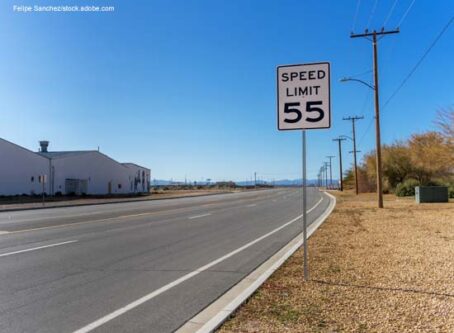ATRI report reveals running a trucking company is becoming more expensive
How much does it cost to operate a trucking company? The American Transportation Research Institute attempts to answer that question in its latest Operational Costs of Trucking report.
On Monday, Nov. 4, ATRI released its annual report detailing the costs of trucking operations. The short story: Running a trucking company was more expensive in 2018 compared with the previous year.
According to the report, all measurements analyzed increased last year except one category: tires. However, tire costs only remained stagnant. Below is a breakdown of the marginal costs in 2018, both per mile and per hour.
- Fuel costs: 43.3 cents per mile mile, $17.07 per hour (18% increase).
- Truck/trailer payments: 26.5 cents per mile, $10.45 per hour (less than 1% increase).
- Repair/maintenance: 17.1 cents per mile, $6.72 per hour (2% increase).
- Insurance premiums: 8.4 cents per mile, $3.32 per hour (12% increase).
- Permits/licenses: 2.4 cents per mile, 95 cents per hour (4% increase).
- Tires: 3.8 cents per mile, $1.50 per hour (unchanged).
- Tolls: 3 cents per mile, $1.17 per hour (11% increase).
- Driver wages: 59.6 cents per mile, $23.50 per hour (7% increase).
- Driver benefits: 18 cents per mile, $7.10 per hour (5% increase).
Accounting for all items, the total cost of operations in 2018 was $1.821 per mile or $71.78 per hour, a nearly 8% increase from 2017. Last year’s operational costs are the highest since at least 2010. The largest increases came with diesel prices, insurance premiums, toll rates and driver wages.
Driver wages/benefits (43%) and fuel costs (24%) accounted for more than two-thirds of total costs.
Driver pay
By sector, specialized operations experienced the largest costs at $2.02 per mile. Truckload operations spent a low of $1.71 per mile and less-than-a-truckload operations were in the middle at $1.90 per mile. Higher spending in permits led to higher costs for specialized operations.
In terms of driver compensation, LTL drivers received the most compensation at 94.7 cents per mile. ATRI attributes the higher compensation to higher demand for drivers. Specialized drivers received 77.8 cents per mile, while truckload carriers reported a low 68.2 cents per mile.
Despite the industry experiencing a major retention/turnover crisis, annual changes in bonuses do not seem to reflect the problem. Regarding bonus pay, starting bonuses increased nearly 12% to $1,562. However, retention bonuses dropped significantly from $836 to $672, a nearly 20% drop. Safety bonuses also decreased to $1,238, 6% less than 2017.
Larger carriers have cost advantage
In several categories the large carriers have a more advantageous position when it comes to operation costs.
Regarding fuel costs, diesel prices began rising in 2017 after hitting the lowest prices in more than a decade, continuing through 2018. As ATRI points out, small and medium-sized carriers are hit the hardest as they typically are not in a position to hedge prices or participate in large-volume pricing discounts at truck stops. Carriers with less than five power units paid 50.6 cents per mile for fuel. Conversely, those with more than 1,000 power units paid a low 39.1 cents per mile.
The same trend is seen in repair and maintenance costs. Small fleets paid 22.5 cents per mile in repairs while large carriers only paid $0.142 per mile. ATRI surmises this is due to smaller fleets owning older equipment compared with larger fleets. Also, larger fleets may have in-house technicians for maintenance and repairs.
Even insurance premiums are higher for smaller carriers. Those with fewer than five power units pay 16.5 cents per mile for insurance premiums. That number steadily decreases the larger the fleet, with the largest fleets paying less than 5 cents per mile. Possible explanations for the discrepancies include smaller fleets unable to increase financial risk and larger fleets able to pay higher deductible or are self-insured.
Cost of ELDs
Last year was also the first year that carriers were required to have an electronic logging device or automatic on-board recording device. Consequently, initial setup combined with recurring service costs added to expenditures.
According to the report, ELD per unit fees are $757.81, plus an additional $37.32 per month for subscription fees. AOBRDs are more expensive at $960.97 per unit and a monthly subscription fee of $39.32. ATRI attributes lower ELD costs to greater competition among many ELD providers compared with a smaller number of companies offering AOBRDs.
Only 31% of respondents in ATRI’s report had an ELD in 2018, with 67% using an AOBRD. The number of ELDs will likely increase in next year’s report as other surveys have indicated the majority of fleets adopted ELDs by the third quarter of this year, according to ATRI. Furthermore, the operational costs for ELDs will likely be even higher for the 2020 report since AOBRDs must be replaced with ELDs by Dec. 16, 2019.
Editor’s note: A previous version suggested lower insurance premiums for smaller fleets. ATRI updated its report that indicates the opposite is true. The story has been corrected to reflect those changes.









